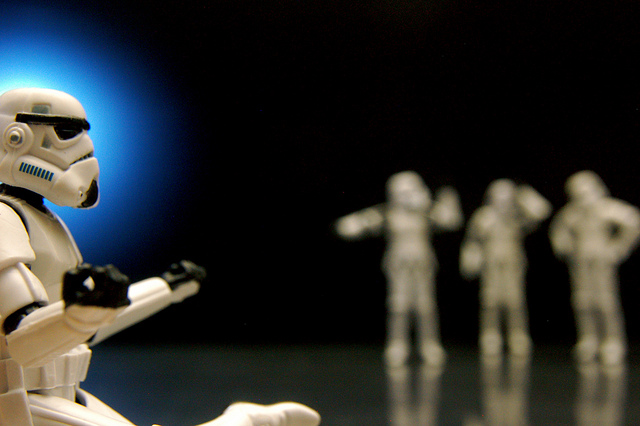
 In my meditation practice, I cultivate the ability to be still. Some mornings, this translates to keeping my body as physically still as possible until the bell rings. In the purely physical sense, I am learning to watch and observe sensation in my body without reaction. For example, say you have an itch. The sensation triggers a physical response – a reaction – to scratch. But what if you don’t scratch right away?
In my meditation practice, I cultivate the ability to be still. Some mornings, this translates to keeping my body as physically still as possible until the bell rings. In the purely physical sense, I am learning to watch and observe sensation in my body without reaction. For example, say you have an itch. The sensation triggers a physical response – a reaction – to scratch. But what if you don’t scratch right away?
To watch and observe without reaction. Rather, to watch and observe my desire to react. Then choosing to act – or not. It’s as simple as creating pause between feeling an itch, and scratching it. But what if what if you don’t scratch at all?
What if, instead of scratching, I observe the sensation of the itch and DO NOT ACT. You try it. It’s harder than it looks. If you focus on it for a few seconds, sure you can keep your hand from reaching. But let go of the focus and involuntarily your hand will be drawn to the spot. Even thinking about not scratching may cause itching sensation to crop up all over your body.
So don’t think about it. Instead focus on your breath, and other sensations in the body. Moving the awareness as you go and eventually returning to the sensation. Is it still there?
Vipassana meditation specializes in this kind of breath and physical observation. The theory boils down to one word: Anicca. Roughly translated “impermanence” or as I liked: “and this too shall pass.” The technique is powerful, almost scientific in it’s specificity. I won’t go into it here, because that’s what’s the interwebs are for. Instead I’ll tell you what I experienced..
What happened when I learned to resist the urge to scratch? After a few minutes (and a lot of failed efforts), the itch simply WENT AWAY. This can be applied to all sorts of bodily sensation, and believe me when you sit for hours at a time meditating you will encounter a HOST of sensation. I used to think Buddha was a cop out for abandoing his family life and retreating to sit under the bodhi tree until he received enlightenment. (I mean, how hard could THAT be?)
Try sitting still for a few hours yourself.
My favorite party trick during my ten day Vipassana retreat was learning to “tune out” a sneeze. If I focused on my breath, and kept my awarness moving, the urge to sneeze would simply dissolve. As Goenkaji likes to remind us: “Anicca, Anicca, Anicca”
I call it a party trick because all of this work on the physical level is only preparing us for the major leagues: the mind.
On other mornings (better mornings, if I don’t reserve judgement) the work is in stilling the inner self – the constant stream of mental chatter that accompanies my days dragging me out of the present moment by worrying about the past or spinning off into future concerns. Apply the scratch theory to your thoughts and see what happens.
We have a thought – usually focused on the past or the future – that creates some sensation inside us. The sensation, causes us to react. Maybe we tell ourself a story about the car that cuts us off in traffic and we get pissed off. Or someone says something offensive, or insulting. Or your partner does something irritating. Feel that heat in your head, or your face or your chest, or your fingertips? Does your belly clench? Does your heart speed up? That’s the physical sensation generated by the thought. Powerful stuff right?
The trick is – and this is where meditation used to fail for me – it’s not about controlling the thought, or the sensation. You can’t. The thought/sensation process almost always happens so quickly there’s no way to step in between it at first.
Instead, simply observe both without reacting immediately, i.e. don’t scratch the itch.
(Keep in mind, this doesn’t make the person who cut you off in traffic “right.” Or the one who opened their mouth and let the stupid out OK. But have you ever wished you could come up with a better response without being overwhelmed by your own emotion? We all know the expression “seeing red.” Now what if you could see AROUND the red? How would that change how you respond?)
This is where things get challenging. Ignore the thought – don’t bother – focus on the sensation. Let it pass. Repeat. And Repeat. And Repeat. It’s the most exhausting mental work I’ve ever done. But it’s also the most rewarding. On the best days (if I allow judgement) between the thoughts and under the sensations is a certain quiet, the stillness of my own breath and a sense of lightness – of freedom from worry and analyzation. But even on the other days – when I’m just trying to sit still – I’m flexing my willpower and exercising my ability to prevent sensation from becoming reaction.
But don’t take my word for it: the Dhamma Brothers is a documentary following a group of inmates who participated in a Vipassana Meditation program while incarcerated. The film is available on Netflix instant streaming and for purchase on
amazon. The results of the program on their lives in their own words – and the words of guards and administration – inspires me to keep coming back to my meditation for the benefits it provides.